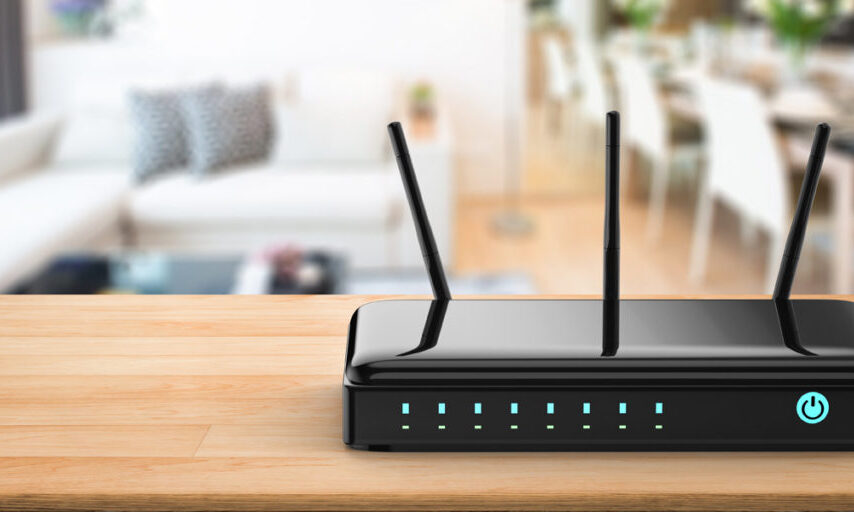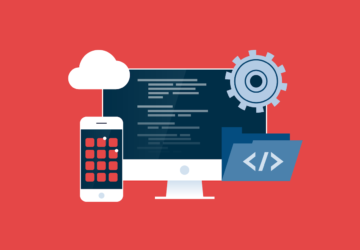The convenience of a business Wi-Fi makes it an essential component for any organization today.
Whether it is accessing and replying to customer emails, marketing online, or processing payments, a Wi-Fi network plays a critical role in business operations.
Unfortunately, cybercriminals are taking advantage of insecure business networks to steal confidential information. Plus, many small and medium-sized businesses (SMBs) lack the cyber skills and resources to secure their networks properly.
To prevent your business from becoming a cyber-attack victim, here are 10 tips to secure your office Wi-Fi.
1. Change your SSID
The Service Set Identifier (SSID) is your Wi-Fi network’s name.
The default router SSID is something with the manufacturer’s name and a number. For example, Linksys_XXX or D-Link_XXXX.
Changing the SSID name might keep network hackers or attackers away, as it shows that a router is under careful management compared to networks using their default SSIDs. Plus, the default Wi-Fi network name tells a hacker exactly where to look for documentation to access the network. Increase your Wi-Fi network security by changing admin credentials.
Changing the network SSID is usually the same across routers, but the exact names of menus and settings might vary according to the model you have. The basic steps are:
- Find the router IP address from the manufacturer website or documentation.
- Log in to the router administrative console.
- Change SSID and password.
- Update the connection for all your devices.
The name you choose should be unique to you so that anybody nearby scanning for Wi-Fi signals on a computer or phone knows it is your business’s.
2. Change the login information regularly
Many SMBs have had their networks attacked after employees have leaked their passwords.
Therefore, you must update the Wi-Fi network password regularly. Another important consideration is to choose strong passwords.
The password you choose should not be easy to guess. The best passwords are those that follow the criteria below.
- Long passwords — A long Wi-Fi network password of at least eight characters makes it harder to hack.
- Randomize passwords — A long password that contains regular words in the dictionary is easy to crack. Instead, randomize symbols, letters, and numbers with uppercase and lowercase letters.
- Misspell — A handy trick to strengthening your network is to make the password unique. For instance, “I love late night movies at 11:00” can become “ILl89tm@11.00.”
- Avoid common passwords — Even using combinations of letters and numbers can lead to weak Wi-Fi passwords. Some of the worst passwords to use are “iloveyou,” “abc1234,” and “qwerty.”
3. Encrypt your wireless access points
Encrypting your business’ wireless data with a security protocol prevents unauthorized individuals from accessing your network.
A security protocol helps secure business data during transmission.
Depending on the requirements of your wireless network, you have the option of choosing:
- Wired Equivalent Privacy (WEP) — This is the original and basic wireless encryption protocol that is most used when connecting your older devices.
- Wireless Protected Access 2 (WPA and WPA2) — While both were once two dissimilar wireless protocol standards, they are now associated with each other. This protocol is the most secure, but it does not support wireless devices manufactured before 2006.
Managing encryption is as simple as opening the security settings page on a wireless access point’s configuration page.
4. Set up double firewalls
Data loss in any business is horrible.
A firewall helps control network traffic while filtering out unauthorized access attempts without interfering with your network. Wireless network firewalls keep your computers and files away from virus attacks and restrict access.
In a small business network setup, it is advisable to set up double firewalls from different vendors.
This security strategy is particularly effective. If a hacker shatters through the primary firewall, and the secondary protection service still works, getting through the second firewall will be a tedious task for the hacker.
While firewalls may affect performance, the difference is negligible. Hardware-based (in a router) and software-based (as programs and in operating systems) firewalls also stop infected computers in your network from attacking other devices.
5. Use antivirus software for your office PCs
Install a rigorous antivirus product on all computers in your network.
The principal purpose of the software is detecting and neutralizing or eradicating malicious code, even before infecting connected devices. Antivirus software runs regular scans on host computers and compares files with a database that contains signatures of known malware.
Updating the database allows it to include new malware signatures as they emerge. Some software on the market can detect threats by locating alterations in the system, identifying file behaviors, and monitoring general computer component behavior.
Modern antivirus software suites also analyze each file on a computer while monitoring for unusual activity. However, do not install more than one antivirus product on one device. Both products may detect each other as malware and work hard at blocking each other—leaving your PC unprotected.
Installing antivirus software protects your office PCs from various malware, including:
- Viruses — As hidden software made for accessing computer data without your knowledge or consent, viruses can steal information, delete critical documents, or even carry out system changes.
- Trojans — Malware can hide as legitimate software that offers a hacker access to your computer. Some even allow remote control of the victim’s PC.
- Ransomware — These hijack information from your computer, encrypt data, or block you from accessing your files for a ransom.
- Worms — These are programs that replicate themselves to cause computer and network collapse.
- Spyware — These programs infect devices and computers and collect user habits, bank information, personal information, and other critical pieces of data. Hackers use spyware to record keystrokes made by the user to steal credentials.
6. Create separate networks for private and public access
Any business with a Wi-Fi network will have guest access for customers and other visitors to use.
Since most people coming into your business are just checking their social media or email, there is not much extra bandwidth needed. Also, the guest network serves as a powerful marketing tool and stimulant to your walk-in traffic—especially when you have people seated in a waiting room.
Best of all, having separate public and private networks protects your business systems. Otherwise, a visitor on your wireless network might breach your business data.
Fortunately, there are several options for accomplishing this at minimal cost while offering your clients Wi-Fi.
- Using hardware — Separate equipment for different networks makes it nearly impossible for a visitor to hack their way into your private network. Save costs by utilizing consumer-grade, low-end access points that have their physical wiring directly to an outside Internet connection.
- Separate subnets — For example, if the normal internal address is 192.168.1.x, create a separate subnet using 192.168.5.x with a distinct set of permissions and security protocols. Some routers let you enable a guest account option in their software. All you need to do is assign a new SSID, and your network does the rest of the configuration work.
- Leave the guest network open — If you lock the rest of a business wireless network, you may leave your guest network without a password. Doing this discourages people from looking beyond. Make this strategy even more effective by hiding your private SSID network.
7. Use a VPN
A Virtual Private Network (VPN) subscription is critical to protecting your wireless network privacy for all users. The investment is small, but it secures big chunks of business activities in several ways.
Masking incoming and outgoing data from hackers via encryption keeps users’ browsing history and data censored. VPN solutions can also hide your location by masking the device IP from outsiders.
Additionally, VPNs can safeguard files and information when connecting to a public Wi-Fi network away from the office. Therefore, a VPN is critical for any business with remote or traveling employees who can use added protection.
8. Conduct regular access point scanning
You cannot protect the weak points in your wireless network if you do not know where the vulnerabilities are.
A thorough Wi-Fi audit is the best way to find issues and assess the situation so you can then:
- Install the right antivirus malware protection tool.
- Test the health of your servers, applications, and software.
- Discover hidden security weak points and boost network efficiency.
- Carry out frequent data backups.
- Grade your firewall’s capabilities in keeping out infiltrators.
9. Hide your router in a secure location
The simplest way to overcome the security precautions you implement is someone hitting the reset button on the router!
It is critical that you double-check that your router is in a secure location with limited access. For example, a locked cabinet in your locked office. Also consider installing 24/7 video surveillance solutions to monitor your router, access points, and switches.
10. Hire a cybersecurity agency
An expert and experienced New York cybersecurity service provider can help you set up a cost-effective and robust Wi-Fi network security system.
Analysts from the company investigate your business’s IT infrastructure, check the design and implementation, and carry out maintenance tasks on weaknesses likely to be a threat. Cybersecurity consultants also review the regulatory security requirements of your organization.
Most steps above are useless if employees do not know safe network practices. So, analysts can step in and train your staff on the best practices that come with keeping your network secure.
Conclusion
Would you leave your car or house unlocked? Doing so leaves you vulnerable to problems like vandalism and theft—and your office Wi-Fi network is no different. Following these tips goes a long way in keeping your business and network secure and safe.
Keeping abreast of all that is happening in the technology world can overwhelm even the most tech-savvy person. We love sharing more with you, which is why we bring you the top stories and life hacks in tech. Find out more here!








